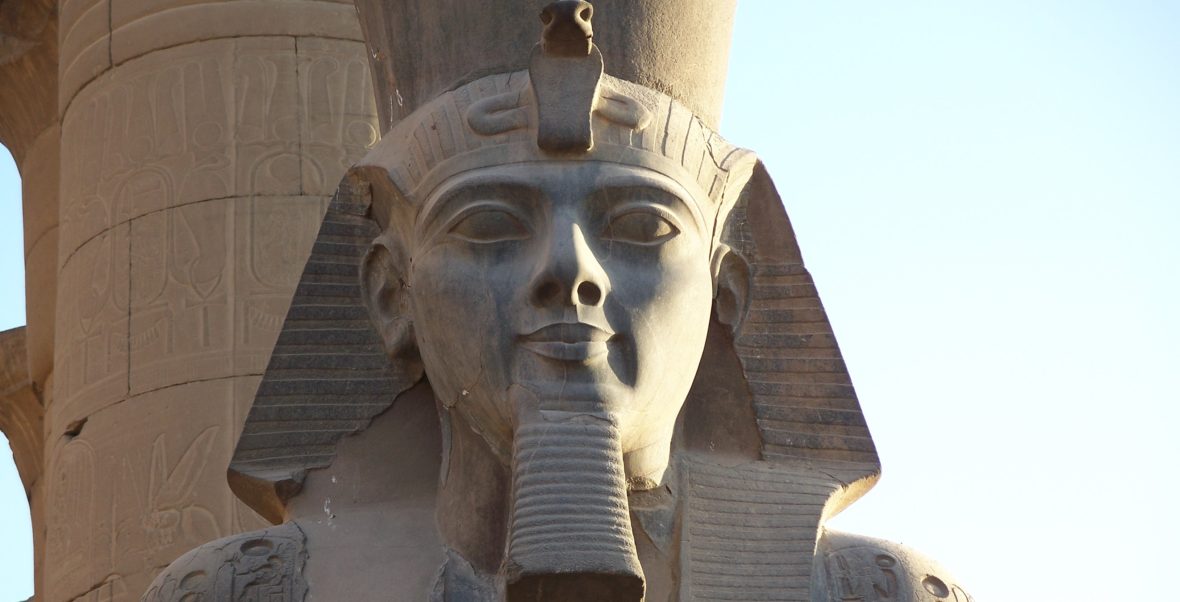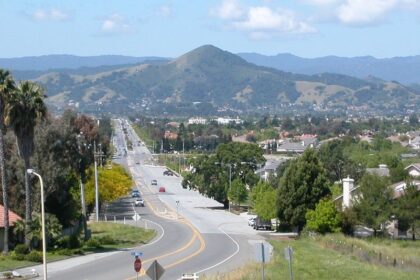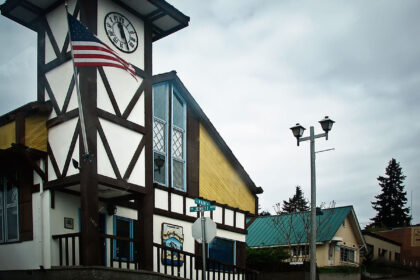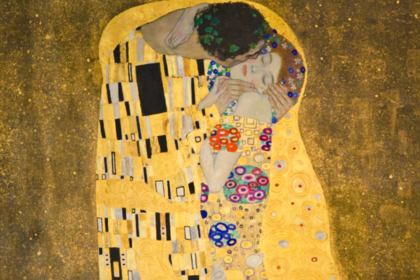Ramesses II, also known as Ramesses the Great, was the third pharaoh of the 19th Dynasty of Egypt. He’s often regarded as the greatest, most celebrated, and most powerful pharaoh of the Egyptian Empire. His successors and later Egyptians called him the “Great Ancestor.” Take a look below for 30 more fun and interesting facts about Ramesses II.
1. He’s known as Ozymandias in the Greek sources, from a translation into Greek of a part of Ramesses’ throne name, Usermaatre Setepenre, or “The justice of Re is powerful-chosen of Re.”
2. Ramesses II led several military expeditions into the Levant, reasserting Egyptian control over Canaan.
3. He led expeditions to the south, into Nubia, commemorated in inscriptions at Beit el-Wali and Gerf Hussein.
4. The early part of his reign was focused on building cities, temples and monuments. He established the city of Pi-Ramesses in the Nile Delta as his new capital and used it as the main base for his campaigns in Syria.
5. At the age of 14, Ramesses was appointed Prince Regent by his father Seti I. He is believed to have taken the throne in his late teens and is known to have ruled Egypt from 1279 BC to 1213 BC.
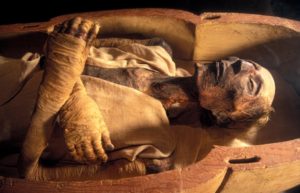
6. Manetho attributes Ramesses II a reign of 66 years and 2 months. Most Egyptologists today believe that he assumed the throne on May 31, 1279 BC, based on his known accession date of III Shemu day 27.
7. While the estimates of his age at death vary, most researchers believe that 90 or 91 is most likely.
8. Ramesses II celebrated an unprecedented 14 sed festivals, the first being held after 30 years of a pharaoh’s reign, and then, every three years, during his reign; this is more than any other pharaoh.
9. Upon his death, he was buried in a tomb in the Valley of the Kings. His body was later moved to a royal cache where it was discovered in 1881, and is now on display in the Cairo Museum.
10. Some historians believed that Ramesses II has had nearly 200 children.
11. According to some historians, Ramesses II was the pharaoh who Moses freed the Israelite slaves from.
12. His son Merenptah succeeding his after his death. Merenptah was 60 years old when Ramesses II died.
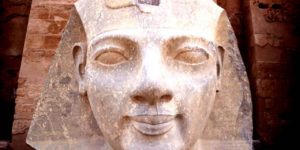
13. In the second year of his reign, Ramesses II deployed a clever strategy to capture the Sherden sea pirates. He posted troops and ships at strategic points on the coast and allowed the pirates to attack their prey. Then, he caught them by surprise in a sea battle, eventually defeating them decisively and capturing them all.
14. He married Nefertari and Isetnofret while serving as the Prince of Egypt. Nefertari would eventually rule with Ramesses II.
15. He was very experienced in battle by the time he took the throne. His father had ensured that he gained a lot of experience to help him succeed in battle.
16. Ramesses II was known as a great leader and a great builder. He rebuilt several of Egypt’s temples and was involved in building many new ones as well.
17. In the time of Ramesses II, the number of temples a king built was indicative of the prosperity of the country. Ramesses II became well known because of the many elaborate temples that he built during his reign.
18. Ramesses II made the first ever recorded peace treaty in the world during his war with the Hittites.
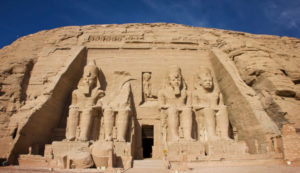
19. He had a temple complex built near Thebes, on the Nile’s west bank, called Ramesseum. It was Ramesses II’s Mortuary Temple and is famous today because of the giant Ramesses statue.
20. Ramesses II had the Abu Simbel temples built in southern Egypt’s Nubian region. This temple is famous because of the four, 66 foot tall statues of a sitting Ramesses II at its entrance.
21. His military strength was immense, with as many as 100,000 soldiers. He led the Egyptians to victories that made them a strong force and country at the time.
22. By the time of his death, Ramesses II was suffering from severe dental problems and was plagued by arthritis and hardening of the arteries.
23. His mummy revealed an aquiline nose and a strong jaw. It stands at about 1.7 meters, or 5 feet and 7 inches.
24. Microscopic inspection of the roots of Ramesses II’s left over hair proved that the pharaoh’s hair was originally red, which suggests that he came from a family of redheads. In ancient Egypt, people with red hair were associated wit the deity Seth, the slayer of Osiris, and the name of Ramesses II’s father, Seti I, means “follower of Seth.”
25. The colossal statue of Ramesses II dates back 3,200 years, and was originally discovered in six pieces in a temple near Memphis. Weighing about 83 tons, it was transported, reconstructed and erected in Ramesses Square in Cairo in 1955.
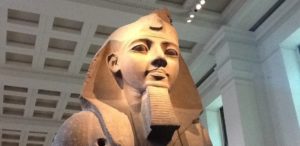
26. In 1255 BC, Ramesses II and his queen Nefertari had traveled into Nubia to inaugurate a new temple, the great Abu Simbel. It’s an ego cast in stone; the man who built it intended not only to become Egypt’s greatest pharaoh, but also one of its deities.
27. During the reign of Ramesses II, the Egyptians were active on a 300 kilometer, or 190 mile, stretch along the Mediterranean coast, at least as far as Zawiyet Umm el-Rakham.
28. Early in his life, Ramesses II embarked on many campaigns to restore possession of previously held territories lost to the Nubians and Hittites and to secure Egypt’s borders.
29. He was responsible for suppressing some Nubian revolts and carrying out a campaign in Libya.
30. Although the Battle of Kadesh often dominates the scholarly view of the military prowess and power of Ramesses II, he nevertheless enjoyed more than a few outright victories over the enemies of Egypt.

